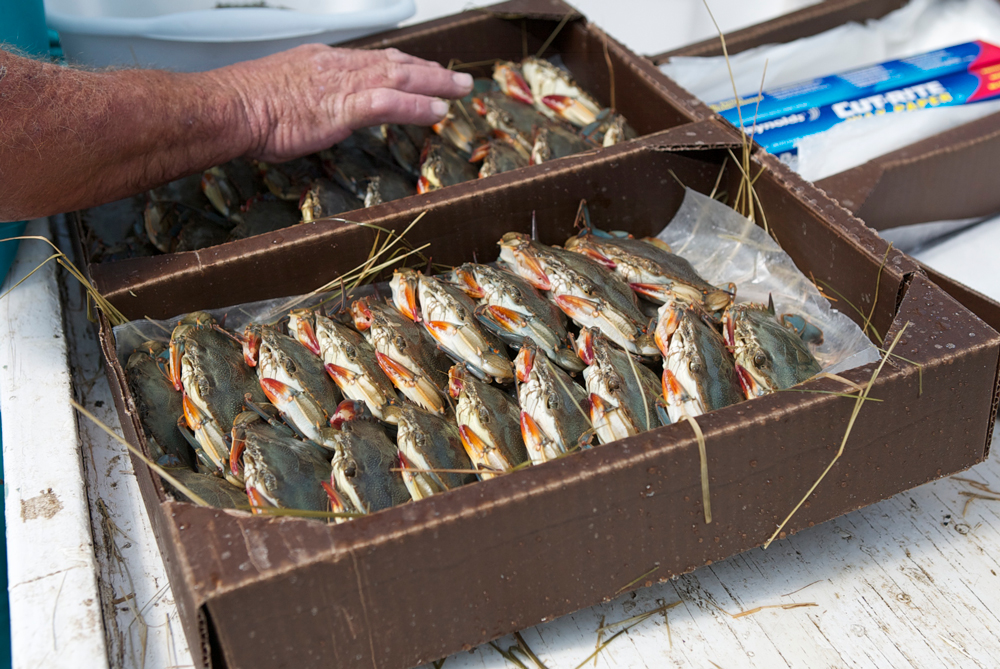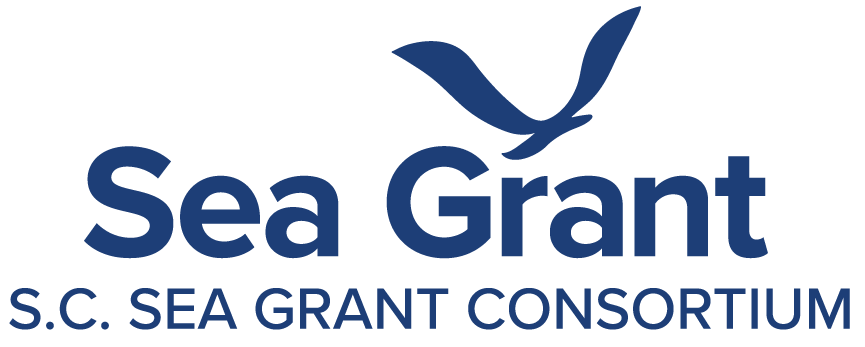The overriding message at the 2017 South Carolina Seafood Summit was changing with the times is critical for the local industry.
“The success stories are the people who aren’t doing it the way their daddy did,” Martin Eubanks, assistant commissioner of the S.C. Department of Agriculture, told the crowd of nearly 80 people at the event March 16 at James Island County Park in Charleston. The S.C. Seafood Alliance and S.C. Sea Grant Consortium hosted the summit with funding from the NOAA National Sea Grant Office.

A box of soft-shell crabs, among the under-promoted South Carolina seafood products. Photo by Joey Holleman, S.C. Sea Grant Consortium.
“Use social media,” Ron Pereira, proteins category manager with food shipping giant Sysco, said during a panel discussion on how to get local products in restaurants and grocery stores. “Take a selfie with a grouper and post it. Sell that story.”
This type of simple marketing sets a product apart from the other 13,000 items Sysco can deliver to restaurants in South Carolina, he said. A chef who sees that photo on the Facebook page of a boat captain known to sell to Sysco can ask for fresh grouper and begin planning a menu.
Dave Grillo, chef at Cantina 76 restaurant in Columbia, agreed.
“Chefs manage so many variables,” he said. “When I go to create a menu, I need to know exactly what’s available. It’s great when someone comes to me and says, ‘This is what’s in season. What can you do with it?’ ”
The ideal situation is for seasonal seafood to be harvested as nearby as possible. “People want to support local,” Grillo said.
Valeska Minkowski’s experience in the Greenville area reinforces the preference for local products. She saw shrimp and grits on the menu at nearly every fine restaurant in Greenville and recognized a business opportunity. She started Urban Seas Aquaculture, growing local shrimp 150 miles inland.
Urban Seas’ shrimp are more expensive, but restaurants can market them as local. “We’ve had an overwhelmingly positive response,” Minkowski said. “We don’t have enough shrimp to fill the need.”
Eubanks appreciates the individual success stories, but he also wants the progress to spread throughout the industry. The state agriculture department began the Certified S.C. Program in 2006 to help connect consumers with local products in restaurants and grocery stores.
